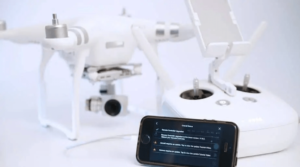Before you purchase a drone for potential commercial use, take the time to lay out your strategy by developing a formal business plan for your new UAV-based company. Having a written plan is a must for pursuing any start-up venture and really helps you organize your thoughts, plans, and figure out the project finances.
Let’s look at a generic outline of a business plan in Sample 1 and begin to insert the particulars for setting up a small aerial photography drone company. You can work on putting your plan together as you finish reading the rest of this blog. Take this basic outline of a plan and adapt it to your UAV company dream. The primary goal here is to get you to write out a plan.
It will save you so much heartache in the long run and help you to plan for the route, the supplies, the end goal, and solutions to the problems you may encounter on that road. Flying UAVs is fun, and we want to make money doing it. Therefore, we need a business plan to merge fun and money.
Sample 1: Business Plan Executive Summary
Business Plan Executive Summary The initial section lays out, in a single-page statement, the structure of your company, the services and/or products you will be marketing (aerial HD videos and high-resolution photos), how you will be marketing it (website, handouts, direct cold calling), capital requirements (where the drone purchasing money is coming from), and future growth plans (more drones? More pilots?). Although it comes first, it is usually written last as it summarizes the rest of the sections of the plan.
General Business Description
Write a more detailed section to articulate a mission statement and company objectives. Explain why you want to start the company and what you want it to accomplish over a specified time frame. If there is even a remote possibility of obtaining external financing of this new UAV company, this will be the guts of the plan that a banker or even your rich father-in-law would want to review. Be sure to specify the type of company it will be: An S-Corp, LLP, or LLC, etc.
Products and Services
List both the obvious deliverables, such as aerial videos and photos, that will be the default products of the proposed company, along with future services such as 2D and 3D mapping, agricultural temperature and moisture monitoring and/or other aerial data acquisitioning operations. Create initial pricing data by assigning values to your airborne efforts. For example, write down how much you are going to charge for creating a production level HD video of a 15-acre property that is for sale.
Marketing Plan
This is probably the hardest part. You can have the coolest product or service ever, but if you can’t market it correctly, you’ll never earn a dime from it. Take plenty of time gathering data for your secondary research phase from every online source you can muster. Then go to physical locations, such as libraries and Chambers of Commerce, to sponge up information. Then it’s up to you to conduct primary research by hitting the bricks and talking to people, including potential clients, other UAV pilots, drone blog members, and current small-business owner-operators. Put
some real effort into this section of the plan with statistics, numbers, costs, and forecast data in the following marketing plan subsections:
Economics
You have to know your target market. That includes having a realistic expectation of the financial health in your area, along with the demand of that local market. Also, you will have to identify the trends in the market to be able to handle the barriers that you will encounter.
Your Products
You are offering aerial photography attained by UAVs and delivered in HD video and high-resolution images. You will have to list the specific deliverables that will be in your offerings. Beyond that, it will be critical to articulate the benefits and features of your products to illustrate how they will be superior to the competition’s offerings.
Customers
Now that you have services to sell, you have to identify your potential customer base. This will be highly dependent on where you live and how far you are willing to travel. Group potential customers and industries based on the difficulty of entry. Mom-and-Pop shops are much easier to approach to get an initial gig compared to the complex entry process required to get on the approved vendor list of a Fortune 500 company.
Competition
Here is where the drone wars begin. Even though the UAV commercial market is just getting started, commercial droners are multiplying fast. Hopefully, you are in a customer-rich and UAV-pilot-poor market, so the competition level is low. Either way, you must know who you will be vying against for each commercial flight.
Sales Forecast
After compiling the previous data points, put together a conservative sales forecast as a financial goal. This will help you organize your efforts and hopefully be able to pay for each step of your success. Come up with a “best case” and “worst case,” but shoot for the middle of those two roads, with your mandatory expenses and bills based on the “worst case” scenario.
Operational Plan
This section of your business plan should describe how your aerial photography business will operate on a day-to-day basis. This is a plan on who does what.
Production
Describe your steps here to fly the sites, download and edit the media, and deliver the product, comprising HD video, high-resolution photos, and 2D/3D maps. Know what drone you will need, what critical accessories like batteries, and the delivery media for the client such as USB drives, Dropbox, and YouTube.
Legal Issues
Hopefully by the time you read this, the FAA has its stuff together, so all you have to do is take an online test and pay $100 for your commercial UAV pilot’s license. If not, prepare to do the 333 exemption dance like the thousands of early commercial drone pioneers did. Either way, go legal on the federal, state, and municipal levels so you will not have to look over your shoulder, and make sure you get the right kind of drone and business and any other insurance you need.
Personnel
Initially, it’ll just be you with your many hats to wear and an observer as needed. However, if things take off, you may need more pilots, sales personnel, and a bookkeeper. If your business plan is aggressive, then this is where you line up your headcount growth chart.
Inventory and Supplies
How many drones do you need? That may be the question you first hear from your wife but have a good answer for it. In my gun collection, every firearm has a job; it should be the same for your UAV fleet. Each drone will have a range of capabilities and others will be backups. Remember, in the real world, two is one, and one is none. Have spares, ample supplies, a massive battery array, chargers, and replacements for any critical items.
Start-up Capital
This is the do-or-die part of the business plan. Most new companies fail due to
Insufficient funding during the first few years. In other words, they run out of money before it comes in the door. One of the best ways to get started is with substantial seed money to get you (literally) off the ground. You can save some cash on your own from your regular day job over time, or you can get a loan from a source that shares your dream. Whichever source you acquire the funding from, ensure it is good for you in the long run. Avoid heavy debt from negative sources. It’s OK to start small and work your way into more UAVs via more money later. You do not have to get a $100,000 loan and launch a fleet the first month. You should aim to get into the black, financially, as soon as possible. Also, give yourself a healthy financial buffer for stuff that goes wrong because it does and will.
Redefining Your Plan
A year into the UAV business you may find what works, what does not, what you like, and what you don’t. Dealing with real estate agents may get old fast, but working with construction site supervisors may be a joy. Either way, the odds are you will be tweaking your original business plan on the fly just a month into it, so be ready to do just that. Remember, this is your company. You are the boss. You make the rules. Money is not happiness, but it sure is freedom!









A very comprehensive sample. Please I need your help.
Kind Regards
Gemba